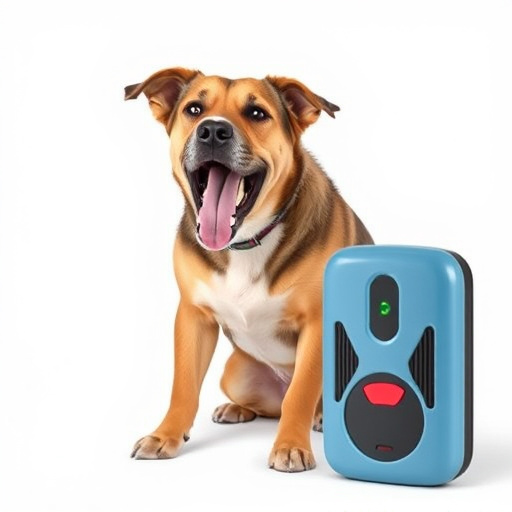Dog repeller technology, leveraging sound waves (3-18 kHz) beyond human hearing, effectively discourages canine intruders without causing harm. With adjustable frequency settings and various mounting options like freestanding units, stakes, or wall mounts, these devices cater to diverse environments. Mounting strategies, such as wall/fence mounting for clear vision, are crucial for outdoor deterrents. Selecting the right location considers accessibility, dog gathering areas, and environmental exposure. Advanced models offer remote control activation, flexible installation angles, and tailored frequency ranges for pet comfort. Types include spray-based, vibration, and solar-powered devices, with specific mounting options like wall mounts or stakes. Regular maintenance ensures optimal performance.
Looking to keep dogs away from your property? Discover the power of electronic dog repellers, a humane and effective solution. This comprehensive guide explores the science behind dog repeller technology, focusing on crucial frequency ranges that drive dogs away. Learn about strategic mounting options for outdoor deterrents, key factors in selecting the right frequency, popular types with various mounting solutions, and best practices for installation and maintenance.
- Understanding Dog Repeller Technology: Effective Frequency Ranges Explained
- Mounting Strategies for Outdoor Dog Deterrents
- Factors to Consider When Choosing a Dog Repeller Frequency
- Common Types of Electronic Dog Deterrents and Their Mounting Options
- Best Practices for Installing and Maintaining Dog Repellers
Understanding Dog Repeller Technology: Effective Frequency Ranges Explained
Dog repeller technology has evolved significantly, utilizing sound waves and specific frequencies to deter canine intruders. Understanding the effective frequency range is key to choosing an appropriate dog repeller. These devices emit sounds within a particular spectrum that are unpleasant or uncomfortable for dogs, encouraging them to leave the area. The technology behind these repellents ensures they’re safe and humane, as they don’t cause physical harm but rather rely on acoustic waves to achieve their effect.
Effective frequency ranges typically fall between 3-18 kHz, with some advanced models offering adjustable settings. This range corresponds to high-pitched sounds beyond human hearing, which dogs perceive as irritants. Different mounting options for electronic dog deterrents are available, such as freestanding units, stakes for outdoor use, or wall-mountable designs, catering to various environments and preferences.
Mounting Strategies for Outdoor Dog Deterrents
Mounting strategies are an essential consideration when choosing an outdoor dog deterrent, especially those utilizing electronic repelling methods. The most common mounting options for electronic dog deterrents include wall or fence installation. This placement ensures the device is out of reach for curious canine noses while still providing a clear line of sight to detect and deter unwanted behavior.
When selecting a mounting location, consider factors like accessibility for both operation and maintenance, proximity to areas where dogs frequently gather or trespass, and environmental exposure to ensure the device’s longevity. Some models offer flexible mounting options, allowing for horizontal or vertical installation, adjustable angles, and even wireless remote control activation, catering to diverse landscapes and personal preferences.
Factors to Consider When Choosing a Dog Repeller Frequency
When selecting a dog repeller, one of the key factors to consider is its frequency range. Different dogs have varying sensitivity levels and preferences when it comes to sound frequencies. A repeller with an adjustable or wide frequency range allows for customization based on your pet’s needs. This ensures that you find the optimal setting to deter your dog from unwanted behaviors without causing discomfort or stress.
Additionally, think about the mounting options for electronic dog deterrents. Wall-mounted devices offer a neat and discreet solution, while portable units provide flexibility to move them between areas. Consider the size of your space and where your dog tends to congregate most often. Some repellers even come with remote controls or apps for easy operation and monitoring from afar.
Common Types of Electronic Dog Deterrents and Their Mounting Options
Electronic dog deterrents have evolved beyond traditional ultrasonic devices, offering a range of options to suit different needs. One of the most common types is the spray-based deterrent, which releases a stream of water when triggered by a pet’s motion or barking. These are often mounted on walls or fences, utilizing vertical space efficiently. Another popular choice is the vibration device, designed to startle dogs without causing harm; these can be attached to collars or embedded in floors and surfaces.
For outdoor spaces, mounting options for electronic dog deterrents play a crucial role in their effectiveness. Wall-mounted devices are ideal for fencing, providing a clear visual barrier, while stake-based models offer flexibility in open areas. Some advanced systems even incorporate solar panels for power, making them eco-friendly and convenient. The choice of mounting depends on the specific needs of the area being protected, ensuring a well-rounded approach to keeping dogs away from unwanted zones.
Best Practices for Installing and Maintaining Dog Repellers
When installing an electronic dog repeller, selecting the right mounting option is key to its effectiveness. For outdoor use, fix the device firmly to a wall or fence using screws or adhesive mounts designed for weatherproof applications. This ensures stability and prevents theft. Choose locations that are visible to approaching dogs but strategically placed to avoid startling humans or pets passing by.
Regular maintenance is equally important for optimal performance. Ensure the repeller’s sensors are clean and free from debris, allowing clear detection of dog-specific frequencies. Test the device periodically to confirm it’s functioning correctly and adjust settings as necessary based on changing environmental conditions or dog behavior patterns in your area.
When choosing a dog repeller, understanding the frequency range is key to ensuring its effectiveness. By considering factors like environment, pet size, and behavior, you can select the optimal frequency that will deter dogs without causing harm. The right mounting strategy, whether it’s a stationary or portable option, further enhances performance. With the variety of electronic dog deterrents available, understanding their features and mounting options allows for informed decision-making to maintain a peaceful and pet-friendly outdoor space.
